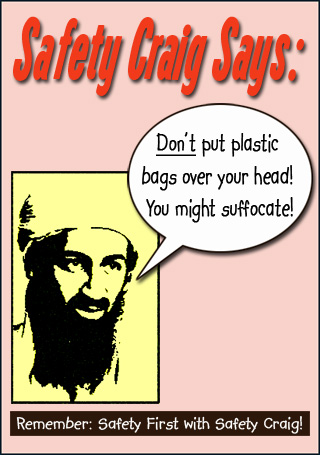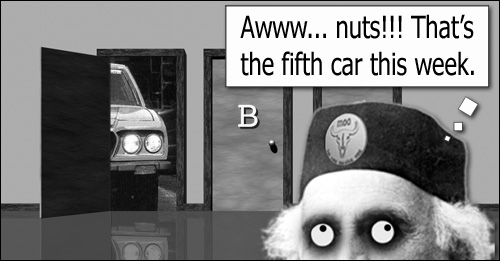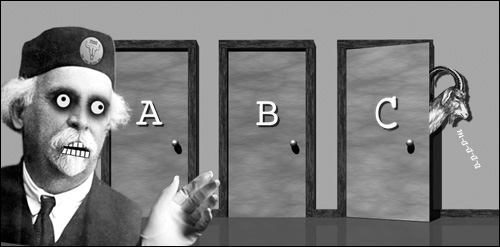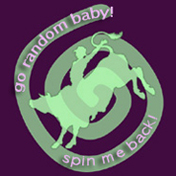Thu 24 Jul 2008
The Uncanny Valley
Posted by anaglyph under Creepy, Ooky, Philosophy, Robots, Science, Technology
[16] Comments
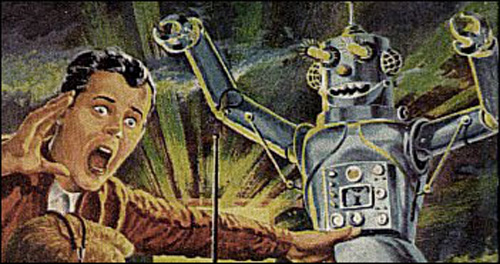
You may remember that in my post about the Coming of the Robots a little while back I talked about Hiroshi Ishiguro’s actroids and the inventor’s attempt to give his automatons a realistic human appearance. I penned the words:
…the closer these things come to having the semblance of humanness, the greater is my desire to punch them.
As I wrote in that post, my feeling is that there is something more disconcerting about the almost human appearance of these robots than there would be about having a clumsy metal quite obviously artificial ‘Robbie’ as a manservant.
Well I discovered today that there is in fact some interesting thinking devoted to exactly this idea, and even better, a cool term.
It is called The Uncanny Valley.
The Uncanny Valley hypothesis was advanced by Japanese roboticist Masahiro Mori and basically states that, as robots develop and become increasingly ‘human’ in appearance, humans start to find it easier to accept and interact with them. However, there comes a certain point beyond which acceptance gives way, quite abruptly, to revulsion. Then (Mori’s hypothesis asserts) as the facsimile approaches even greater realism (that is, the ‘ideal’ human form) acceptance increases once more to ‘human’ level tolerance.
If you viewed the videos of Ishiguro’s actroids you’ll understand exactly what the Uncanny Valley idea encompasses – these robots are creepy and disturbing and there’s no way I’d want one lurking in my house after dark. Or before dark for that matter. So much so that I’m even wary of Mori’s use of the term ‘Valley’ in his hypothesis – from where I stand it looks more like an Uncanny Grand Canyon.
Mori has been criticised on this very point – there is of course no evidence so far that robots will become sufficiently lifelike to make the Uncanny Valley anything more than an Uncanny Precipice.
In fact Mori’s whole concept has been called into question by commentators such as US roboticist and sculptor David Hanson and Swiss artificial intelligence scientist Dario Floreano* who go so far to say that it is pseudoscience. Well, it may be true that there is little actual science behind the idea of the Uncanny Valley as yet, but to my mind at least it makes good common sense that we instinctively don’t lend our trust to something that could be human but also might not be. It’s not a new concept to humans in any way – it has been the subject of paranoid science fiction for decades, and before that an idea that surfaces in folk tales and myths as far back as we have records.
As I said in We Are the Robots, when we used to have the old electronic ‘cut-up’ voices on telephone answering services, it was clear that we were dealing with machines. In my opinion, as superficial semblance to machines decreases (in these ‘voice robots’ at least) then we expect, quite correctly I think, that their behaviour should increase in realism at the same rate or better. And as much as I respect the obviously informed opinions of people such as Hanson and Floreano I think that the Uncanny Valley will persist until such times as robots are indistinguishable from humans.
In other words, when the androids get as convincingly lifelike as Rachel in Blade Runner, then maybe The Uncanny Valley might start to look more like a Grassy Meadow.
___________________________________________________________________________
*Floreano has an MA in Visual Psychophysics. Oh, how much do I want one of those!
___________________________________________________________________________

